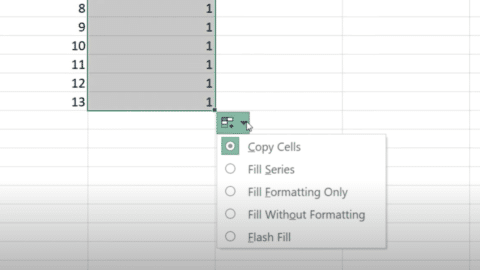Countif with Multiple Criteria
COUNTIF with Multiple Criteria is a powerful function in Excel that allows users to count the number of cells that meet certain criteria. In many cases, the criteria can be easily defined with a simple expression or comparison operator. However, there are scenarios where we need to count the number of cells that meet multiple criteria simultaneously. In this article, we will explore how to use countif with multiple criteria in Excel.
Table of Contents
What is Countif?
Countif is an Excel function that counts the number of cells in a range that meet a certain condition. The syntax for Countif is simple:
=COUNTIF(range, criteria)
Where range is the range of cells that we want to count, and criteria is the condition that we want to apply.
For example, let’s say we have a list of numbers in cells A1 to A10, and we want to count the number of cells that are greater than 5. We can use the following Countif formula:
=COUNTIF(A1:A10, ">5")
This will return the number of cells in the range A1 to A10 that are greater than 5.
Using COUNTIF with Multiple Criteria
What if we want to count cells that meet multiple criteria? For example, let’s say we have a table of data with columns for “Product,” “Region,” and “Sales.” We want to count the number of sales for a specific product in a specific region.
To do this, we can use the COUNTIFS function, which allows us to specify multiple criteria. The syntax for COUNTIFS is as follows:
=COUNTIFS(criteria_range1, criteria1, [criteria_range2], [criteria2], ...)
Let’s take a closer look at how to use this function.
Syntax Breakdown
criteria_range1: The range of cells we want to apply the first criteria to.criteria1: The criteria we want to use to count cells incriteria_range1.[criteria_range2]: Optional. The range of cells we want to apply the second criteria to.[criteria2]: Optional. The criteria we want to use to count cells incriteria_range2.
We can add as many criteria_range and criteria pairs as we need to meet our requirements.
Using COUNTIFS in Practice
Let’s use the example of counting sales for a specific product in a specific region. We have a table with columns A, B, and C, containing data on products, regions, and sales, respectively. We want to count the number of sales for the product “Widget” in the region “East.”
Our formula would look like this:
=COUNTIFS(A:A, "Widget", B:B, "East")
This formula counts the number of cells in column C that meet the criteria “Widget” in column A and “East” in column B.
We can add more criteria pairs as needed. For example, if we wanted to count the number of sales for the product “Widget” in the region “East” that were greater than 1000, our formula would look like this:
=COUNTIFS(A:A, "Widget", B:B, "East", C:C, ">1000")
This formula counts the number of cells in column C that meet all three criteria: “Widget” in column A, “East” in column B, and a value greater than 1000 in column C.
Conclusion
Countif with Multiple Criteria
Countif can also be used to count the number of cells that meet multiple criteria simultaneously. To do this, we can use the following syntax:
=COUNTIFS(criteria_range1, criteria1, [criteria_range2], [criteria2], ...)
In this syntax, criteria_range1 is the first range that we want to apply the first criteria to, and criteria1 is the first criteria that we want to apply. We can add more criteria by adding additional pairs of criteria_range and criteria.
For example, let’s say we have a table of sales data with columns for Product, Region, and Sales Amount. We want to count the number of sales where the Product is “Widget” and the Region is either “East” or “West”. We can use the following Countifs formula:
=COUNTIFS(A2:A10, "Widget", B2:B10, {"East","West"})
This will count the number of sales where the Product is “Widget” and the Region is either “East” or “West”.
Using Wildcards with Countif
Countif can also be used with wildcard characters to count cells that match a pattern. The asterisk (*) can be used to match any number of characters, while the question mark (?) can be used to match any single character.
For example, let’s say we have a list of names and we want to count the number of names that start with the letter “J”. We can use the following Countif formula:
=COUNTIF(A1:A10, "J*")
This will count the number of names in the range A1 to A10 that start with the letter “J”.
Conclusion
Countif is a powerful function in Excel that can be used to count the number of cells that meet certain criteria. When we need to count cells that meet multiple criteria simultaneously, we can use the Countifs function. We can also use wildcard characters with Countif to count cells that match a pattern. By understanding these techniques, we can save time and increase our productivity when working with data in Excel. Please don’t hesitate to reach out with any feedback or suggestions for future topics. We are always looking for ways to improve our content and provide the most valuable resources to our readers.
FAQs
Q1. Can Countif be used with dates?
A1. Yes, Countif can be used with dates. We can specify the date in the criteria argument using the appropriate date format.
Q2. How many criteria can be used with Countifs?
A2. Countifs can handle up to 127 criteria pairs.
Hello, I’m Cansu, a professional dedicated to creating Excel tutorials, specifically catering to the needs of B2B professionals. With a passion for data analysis and a deep understanding of Microsoft Excel, I have built a reputation for providing comprehensive and user-friendly tutorials that empower businesses to harness the full potential of this powerful software.
I have always been fascinated by the intricate world of numbers and the ability of Excel to transform raw data into meaningful insights. Throughout my career, I have honed my data manipulation, visualization, and automation skills, enabling me to streamline complex processes and drive efficiency in various industries.
As a B2B specialist, I recognize the unique challenges that professionals face when managing and analyzing large volumes of data. With this understanding, I create tutorials tailored to businesses’ specific needs, offering practical solutions to enhance productivity, improve decision-making, and optimize workflows.
My tutorials cover various topics, including advanced formulas and functions, data modeling, pivot tables, macros, and data visualization techniques. I strive to explain complex concepts in a clear and accessible manner, ensuring that even those with limited Excel experience can grasp the concepts and apply them effectively in their work.
In addition to my tutorial work, I actively engage with the Excel community through workshops, webinars, and online forums. I believe in the power of knowledge sharing and collaborative learning, and I am committed to helping professionals unlock their full potential by mastering Excel.
With a strong track record of success and a growing community of satisfied learners, I continue to expand my repertoire of Excel tutorials, keeping up with the latest advancements and features in the software. I aim to empower businesses with the skills and tools they need to thrive in today’s data-driven world.
Suppose you are a B2B professional looking to enhance your Excel skills or a business seeking to improve data management practices. In that case, I invite you to join me on this journey of exploration and mastery. Let’s unlock the true potential of Excel together!
https://www.linkedin.com/in/cansuaydinim/










